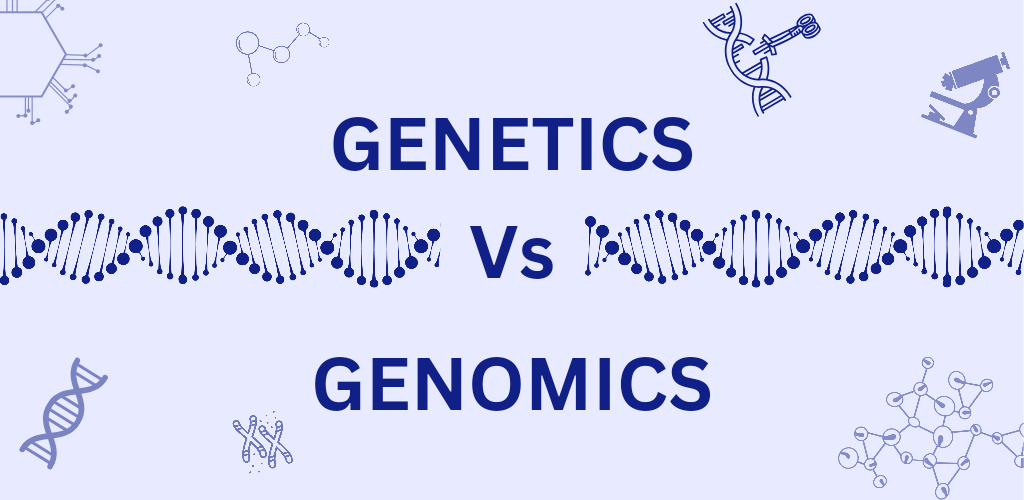The Genetic Blueprint Behind Childhood Potential
Every parent wants the best for their child—from strong health and cognitive ability to emotional resilience and developmental milestones. But how can we truly understand a child’s potential from the very beginning? The answer is increasingly found in their DNA. The growing field of pediatric genetic testing is helping decode how genetics influence everything from newborn development to lifelong well-being. This science doesn’t promise certainty, but it opens new doors for identifying risks, supporting strengths, and tailoring early interventions that matter.
What Is Pediatric Genetic Testing?
At its core, pediatric genetic testing involves analyzing a child’s DNA to identify variants that may signal a predisposition to certain diseases or developmental challenges. A child DNA test might reveal inherited conditions, growth-related markers, or cognitive and neurological susceptibilities. Early access to this information empowers healthcare providers and families to take proactive steps, whether it’s starting a specific therapy, modifying nutrition, or simply monitoring health more closely.
For infants, newborn genetic screening is often the first exposure to this science. It’s a routine test in many countries that screens for a panel of serious but treatable genetic disorders. As technology advances, these screenings can now detect a broader range of issues, from metabolic imbalances to inherited neurological conditions (4).
Genetics and the Brain: Unlocking the Mind in Infancy
A child’s brain is a marvel of biology—built rapidly in the early years and deeply influenced by both genes and environment. Emerging research has mapped key genes that are uniquely active during infancy, especially those tied to the nervous system. These genes show strong associations with psychiatric and neurological disorders, making their early identification a potential game-changer for timely intervention (2).
Crucially, some of these genes—like SYT1 and MYT1L—appear within regions of the genome that evolve rapidly and influence human brain development. Knowing whether a child carries variants in these genes may allow for earlier, more targeted responses to cognitive or behavioral delays. This kind of early genetic diagnosis helps bridge the gap between noticing a problem and doing something meaningful about it.
Growth, Height, and the DNA Connection
One of the most visible aspects of childhood development is physical growth—and yes, genetics are involved here too. Researchers now understand that DNA and childhood development are tightly linked when it comes to traits like birth weight, height, and BMI. Interestingly, genes that influence growth in infancy may also relate to adult health conditions like diabetes and heart disease (3).
These insights suggest that genetic markers could be used not just to monitor growth, but to predict future health risks. For example, identifying certain fetal or maternal genetic contributions early on might reveal why some children are more prone to obesity or metabolic disorders. This knowledge could inform tailored health plans or nutritional guidance during critical growth periods.
From Genes to Behavior: The Developmental Impact
The influence of genetics doesn’t stop at physical traits. Recent work in developmental genomics is starting to reveal how certain gene clusters shape emotional, social, and behavioral growth. By analyzing patterns from genetic health for kids, researchers can investigate why some children thrive under adversity while others struggle.
Polygenic scores—summaries of many small genetic effects—are now being used in developmental psychology to explore individual differences in resilience, learning abilities, and peer relationships. While these tools are still experimental, they hold promise in refining how we understand and support each child’s unique path (4). They also add precision to the broader public health approach by identifying children who may benefit most from early behavioral or cognitive support.
A Time-Sensitive Opportunity: Why Early Matters
The first 1,000 days of life—from conception to age two—form the foundation of long-term health and brain function. During this window, environmental inputs like nutrition, nurturing, and safety interact closely with genetics. Neuroscience confirms that these early experiences can either reinforce or undermine the genetic blueprint a child is born with (1).
That’s why integrating hereditary diseases in children with supportive care systems is critical. When we align genetic insights with responsive caregiving, early learning, and medical support, we give children their best chance to thrive. A strong child DNA test doesn’t just identify risks—it creates a starting point for collaboration among parents, physicians, and developmental experts.
Ethics, Limitations, and the Road Ahead
While the potential of genetic testing in children is substantial, it comes with serious ethical considerations. Results must be interpreted carefully, especially when they concern conditions that might not emerge until later in life. Parents and clinicians must guard against over-diagnosis or undue stress from uncertain findings. Moreover, genetic data is deeply personal, requiring rigorous privacy protections and thoughtful policies about who accesses it and why.
Equally important is the recognition that genes don’t determine destiny. A child with high genetic risk for a condition may never develop it. Conversely, a child with no known risk may still face challenges. That’s why early genetic diagnosis must be part of a broader framework—one that includes education, healthcare access, emotional support, and community resources.
Conclusion: DNA as a Guide, Not a Guarantee
Understanding your child’s DNA offers a valuable lens on their growth, but it’s not a crystal ball. It’s a guide—helping parents and professionals make better-informed choices at a time when those decisions matter most. The science of pediatric genetic testing continues to evolve, offering insights not just into disease, but into the very nature of childhood potential. With the right safeguards and a holistic approach, genetic knowledge can become a tool for building healthier, happier futures.
References:
- Raghavan, C., & Ruta, V. (2022). I Early child development: Silent emergency or unique opportunity? Abstracts, A1.1-A1. https://doi.org/10.1136/archdischild-2022-ichgc.1
- Wang, W., Liu, Z., Peng, D., Lin, G. N., & Wang, Z. (2024). Genomic insights into genes expressed specifically during infancy highlight their dominant influence on the neuronal system. BMC Genomics, 25(1). https://doi.org/10.1186/s12864-024-10911-0
- Cousminer, D. L., & Freathy, R. M. (2020). Genetics of early growth traits. Human Molecular Genetics, 29(R1), R66–R72. https://doi.org/10.1093/hmg/ddaa149
- Armstrong‐Carter, E., Wertz, J., & Domingue, B. W. (2021). Genetics and Child Development: Recent Advances and Their Implications for Developmental Research. Child Development Perspectives, 15(1), 57–64. https://doi.org/10.1111/cdep.12400




